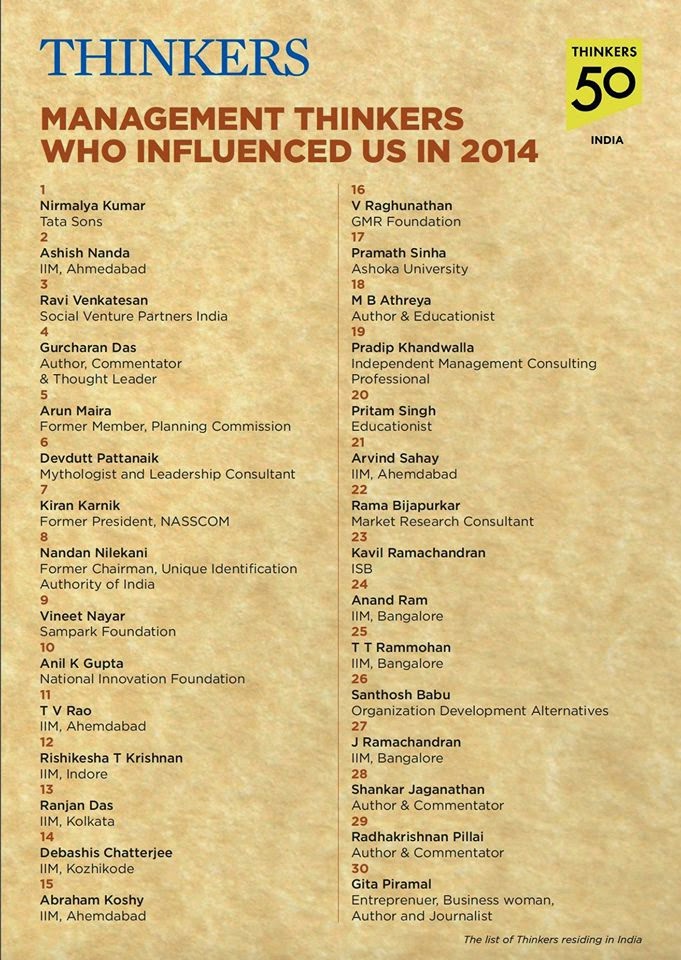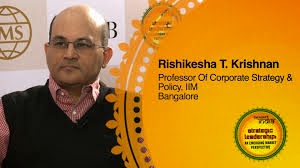When we talk about innovation, we usually emphasise how
important it is to understand user needs and requirements well. Contemporary
innovation paradigms like design thinking require empathic understanding of
user needs through immersion in users’ lives. Not only does such a process
reduce risk by aligning innovation with what the user or customer is looking
for, it also helps identify user needs that the user has not articulated, or
peculiarities in the manner of use that have got internalized by users.
But, there is an additional complication to this picture. In
many product categories, there are existing specifications that have become de
facto standards, or, sometimes, standards laid down by government or regulatory
bodies that have to be met. Do such specifications and standards help or hinder
innovation?
Regulatory Requirements can help…. but, it’s important to
get them right
Regulatory requirements can spur innovation. Perhaps the
best example is in the environmental domain where tightening of pollution norms
has resulted in better engine and exhaust technologies.
But, standards bodies can sometimes fall behind the curve
and this could mean not setting tight enough specifications or not mandating
rigorous enough tests and protocols to test new technologies. The story of
Lithium-Ion batteries in Boeing’s Dreamliner is a case in point.
According to reports in the press, when Boeing went through
certification of the Dreamliner, the US Federal Aviation Administration (FAA)
did not have clear specifications and tests for such batteries as they had not
been used before in commercial aircraft. The FAA therefore placed some “Special
Conditions” as extra requirements for Lithium-Ion batteries – these included
computer control to prevent over-charging, isolation of the battery in a
separate enclosure, etc.
Around the same time, Boeing was itself part of a consortium
of companies that was evolving new standards for testing Lithium-Ion batteries.
This consortium ultimately came up with standards more stringent than the FAA’s
special conditions, but Boeing’s Lithium-Ion batteries were not formally tested
to these standards because the Dreamliner had already entered the FAA’s
certification process.
Adoption of more stringent standards may have spared Boeing
some of its subsequent travails with the Lithium-Ion batteries in the
Dreamliner.
Large companies sometimes use the
absence of standards as a way out of problems. Remember the efforts by Coke and
Pepsi some years ago to escape the charges made by the Centre for Science &
Environment regarding pesticide content in their soft drinks by pointing to the
absence of BIS standards!
Standards, Specifications and Innovation for Emerging
Markets
In an earlier post, I referred to the excellent talk by Dr V.
Sumantran at the Nasscom Engineering Summit. One of the points he emphasized
was that cost gets defined by the requirements, and hence it is important to
define (and re-define) requirements carefully if you want to lower costs. He
gave the example of the Indian low-cost Common Rail Direct Fuel Injection (CRDI)
systems for automobiles that are specified quite differently from their more
expensive European counterparts.
There is a growing if controversial view that the key to
innovation for emerging markets is “good enough” products that meet essential
needs but don’t go overboard in terms of what they offer. This view is driven
by the fact that in many products a large proportion of the features and
functionality are not used by most users, and that cutting these out can reduce
costs. Companies like Mahindra & Mahindra have demonstrated that you can
provide about 95% of the features and performance of advanced country products
at a much lower price.
Kannan
Lakshminarayan on the Tyranny of Existing Standards and Specifications
At the DSIR conference on “Accelerating technology innovation for inclusive and sustainable growth” held at New Delhi on November 7, Kannan Lakshminarayan of Fractal gave some fascinating examples from his experience in developing low cost and relevant products for the Indian market. The best known example he related is that of Vortex, the low-cost Automated Teller Machine specially designed for rural markets.
Vortex has a robust design, incorporates biometric authentication, consumes small amounts of power (just 50W; this is an essential requirement for rural applications where reliable power supply is a major challenge), does not require air conditioning, and can handle both fresh and soiled notes. But Vortex faced an uphill battle in getting accepted as it did not provide all the bells and whistles that the ATMs of established (read “large,” “MNC”!) suppliers did.
Kannan has also been part of the team that developed a spinning machine that reduced the minimum economic scale of spinning by a factor of 100. This machine focused on outcome indicators that are critical to the final product such as feel, fall and drape, but did not focus on traditional parameters like strength, uniformity and fineness that are no longer so critical because of changes in loom technology. Here, as far as I can make out, it was more a case of not meeting the de facto (commonly accepted) standards of the textile industry rather than a problem of regulated or mandated specifications.
Kannan’s third example came from
the training domain. India is struggling to impart skills on a large scale to a
new generation of people about to enter the workforce. One of the important
skills taught in ITIs is welding. Kannan related how welding is traditionally
taught in the same sequence as welding technologies were invented. But, this
sequence means teaching the most complex methods first resulting in a very
steep learning curve for students. Instead, the Aura MIG Training tool
overcomes this problem by teaching the simplest (and most contemporary) method,
MIG welding first. Ironically, MIG welding is not a part of the syllabus in
most welding training programmes!
At the same DSIR conference there
was a fascinating presentation by Professor Ashok Jhunjhunwala of IIT Madras on
a new energy paradigm that could ensure uninterrupted power supply even within
the present constraints of power generation. I didn’t understand all the technicalities,
but one thing that struck me was the number of regulatory and standards changes
his proposed solution would need. I just can’t see how all those will ever come
about in a sector that is as regulated as power.
Conclusion
Because of the stakes involved,
standard-setting is often an arena where various pulls and pressures are
exerted. A senior manager at a leading auto component company was telling me
today how in spite of the emission norms becoming more stringent for cars and many
commercial vehicles, three-wheelers still remain outside the purview of new
standards because the existing technologies can’t be upgraded to meet more
stringent norms. New technologies that would enable more exacting standards would
push up cost by 25 to 30% the cost of three-wheeler. The lobby for low-cost
transportation makes sure that standards are not raised in a hurry even if that
means that we as a society bear the cost of such externalities.
So, while standards can occasionally
play a role in enhancing innovation, they can often be tools for maintaining the
status quo and the interests of existing players.



















Excellent Post. Complying to emissions is not seen as value add in Indian context. No one says proudly that he has BS-IV car but feel proud to say that his car mileage is far superior. The standards helps in posing constraints and spur innovations but wrong boundary conditions can suboptimize the product. For instanstance, a power generation genset running in open infrastructrure project where noise is relatively less important in Indian context, has to comply stringent noise level of 75 DB which brings penalty to engine overheating and reliability issues causing lot of losses whereas nominal noise is just acceptable in situation where installation is done in open field and other noise sources are already present. This brings down the value approrpriatness of a product in a given context.
ReplyDeleteExcellent Post. Complying to standards in India is generally not seen as a Value-Add. User doesn't feel proud to have BS-IV car but feels proud in saying that he has superior milieage (which can easily achievealbe by comprising emissions). Standards create boundary conditions to spur innovations however wrong boundary conditions can suboptime the product. For instance, Power generation genset running in open infrastructrure project where noise is relatively less important in Indian context, has to comply stringent noise level of 75 DB which brings penalty to engine overheating and reliability issues causing lot of losses whereas nominal noise is just acceptable in situation where installation is done in open field and other noise sources are already present. This brings down the value approrpriatness of a product in a given context.
ReplyDeleteA lucid overview of what could otherwise have been an arcane topic!
ReplyDelete"Standards" are commonly misunderstood to mean 'good quality', but they are generally mere entry-barriers imposed by incumbents to keep out new challengers. So, the least regulated domains often see the greatest ferment of new ideas.
Somewhat counter-intuitively, absence of standards could be a tool to perpetuate monopolies, too -- by making new and better offerings not inter-operable, thereby locking-in the user to legacy choices.
And, not all standards are technical. The insistence on unreasonable financial/commercial 'pre-qualification' criteria have ensured that small but innovative companies don't get to hit the market at all.